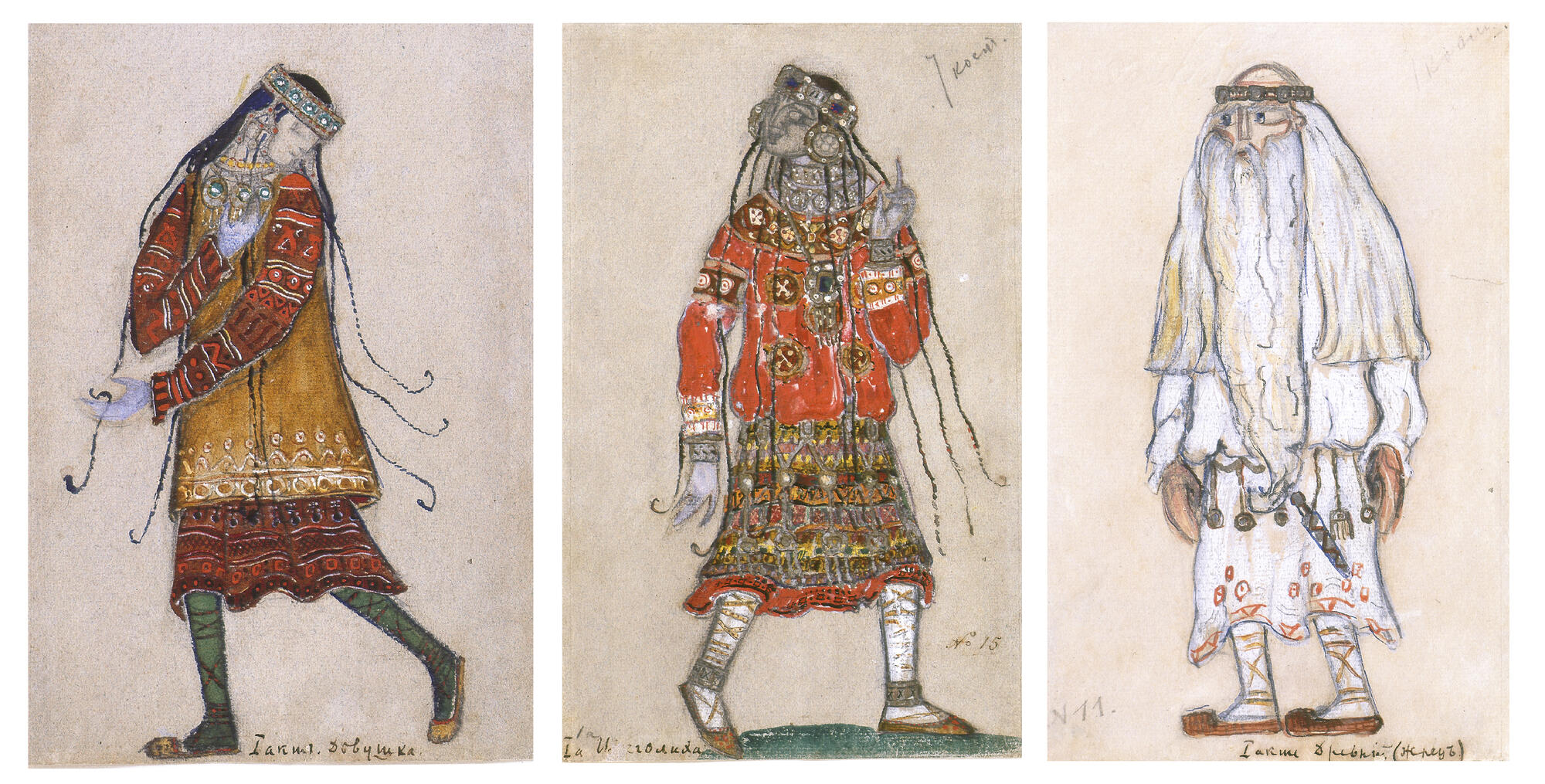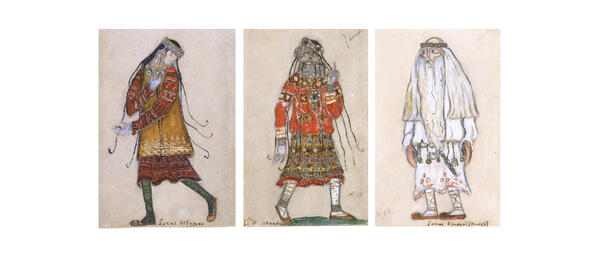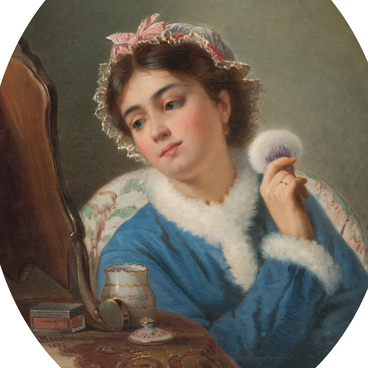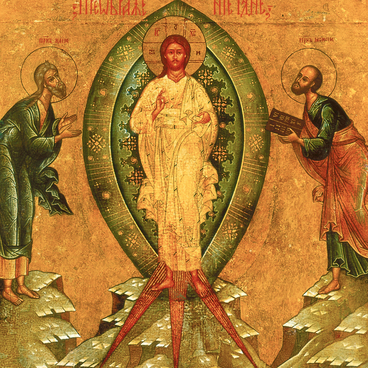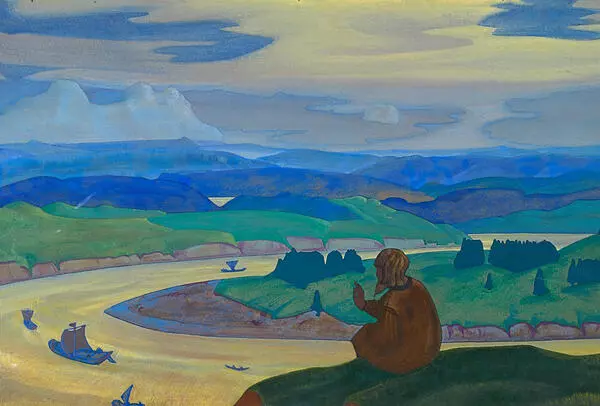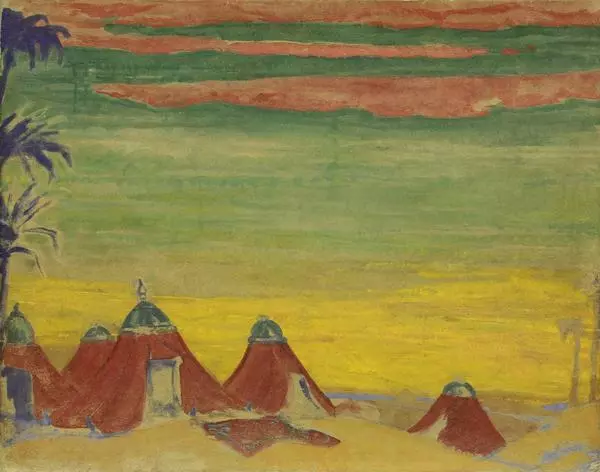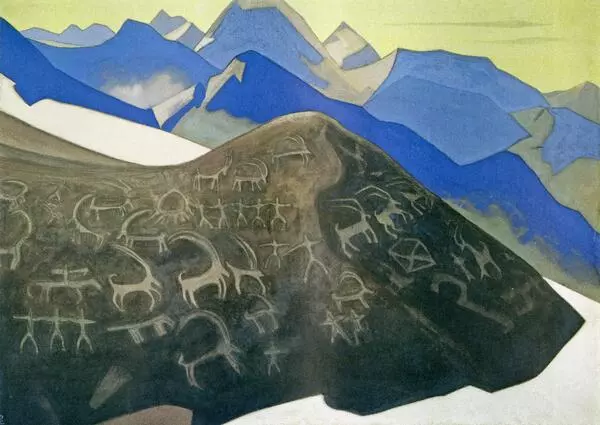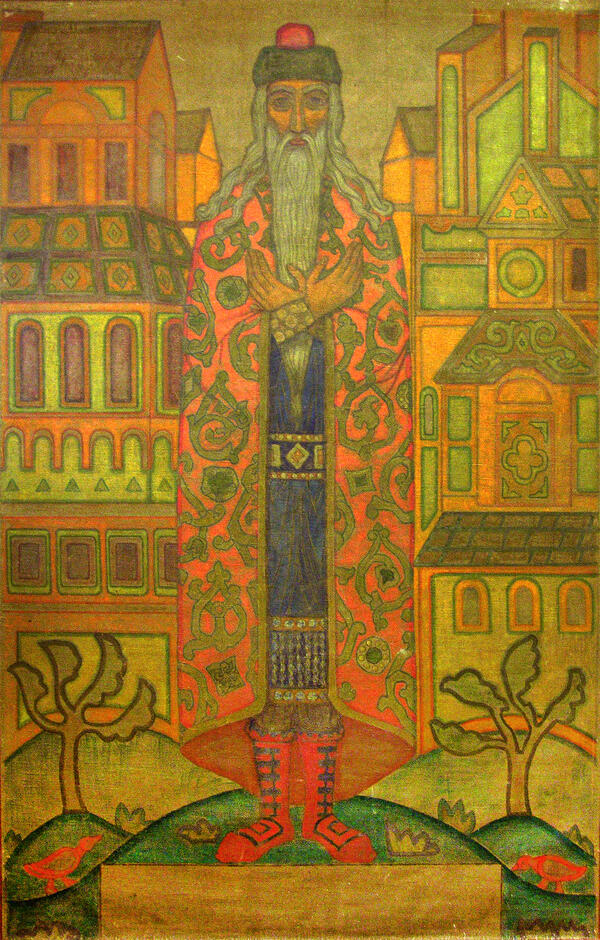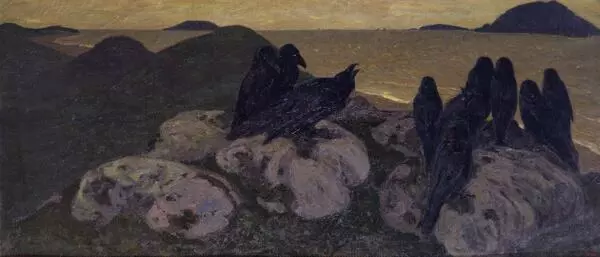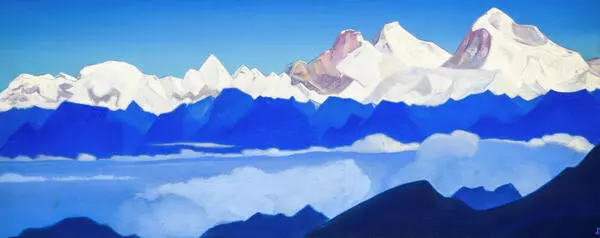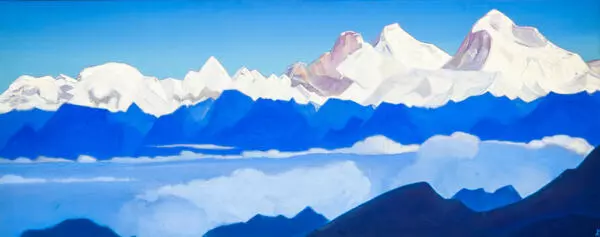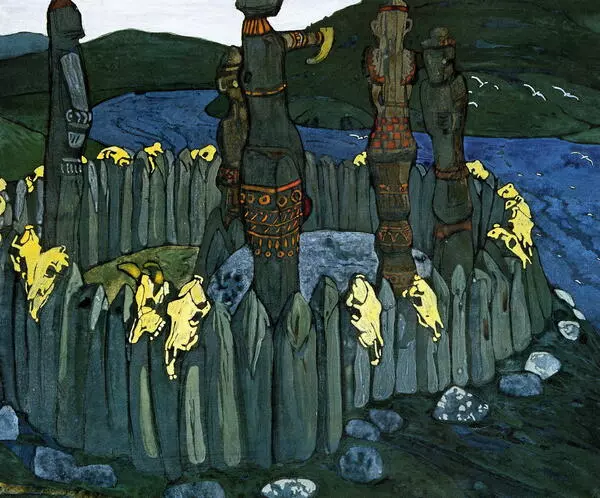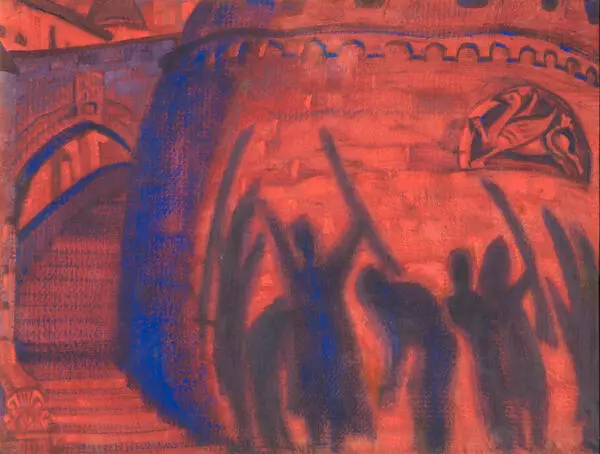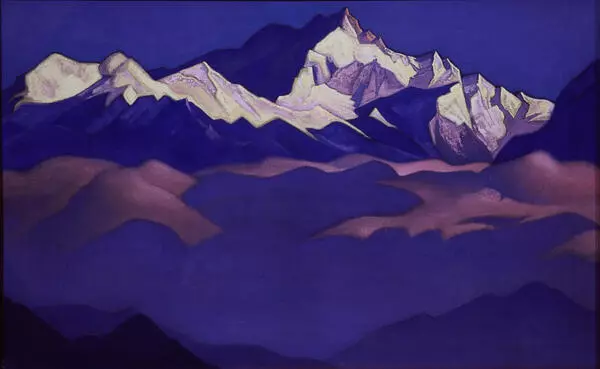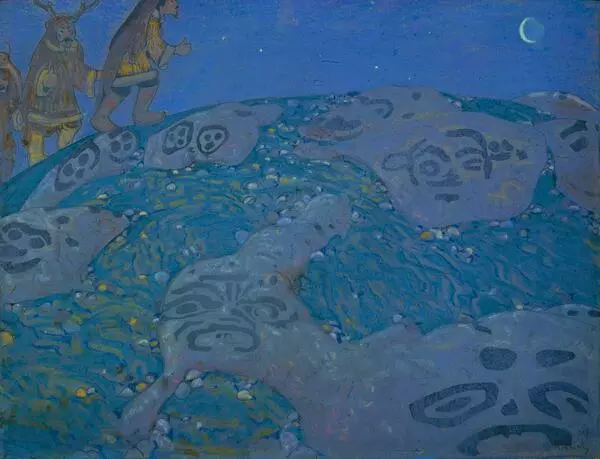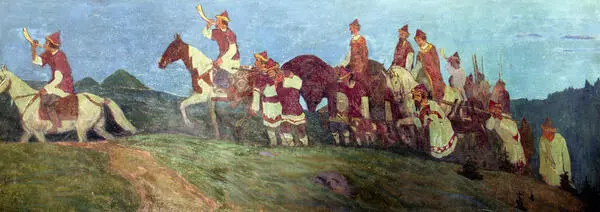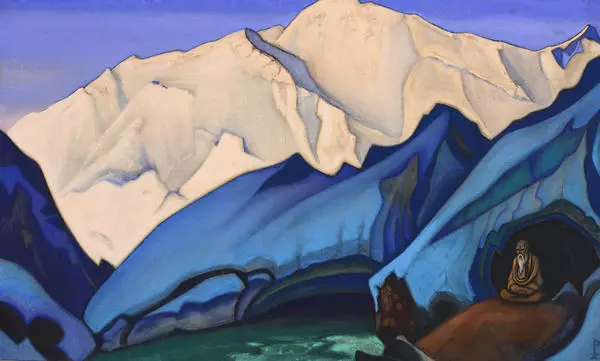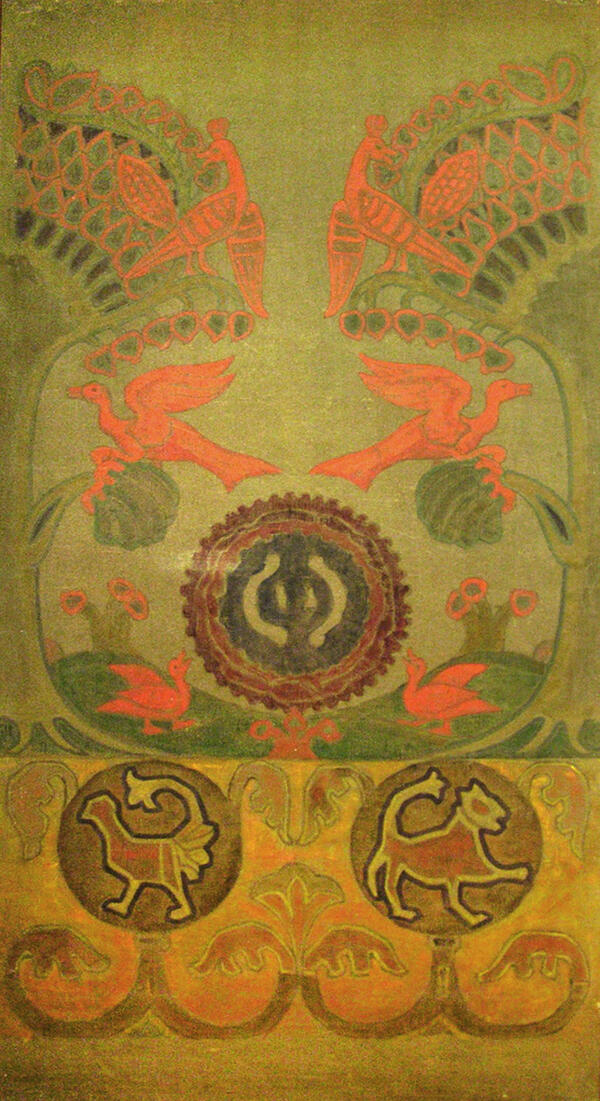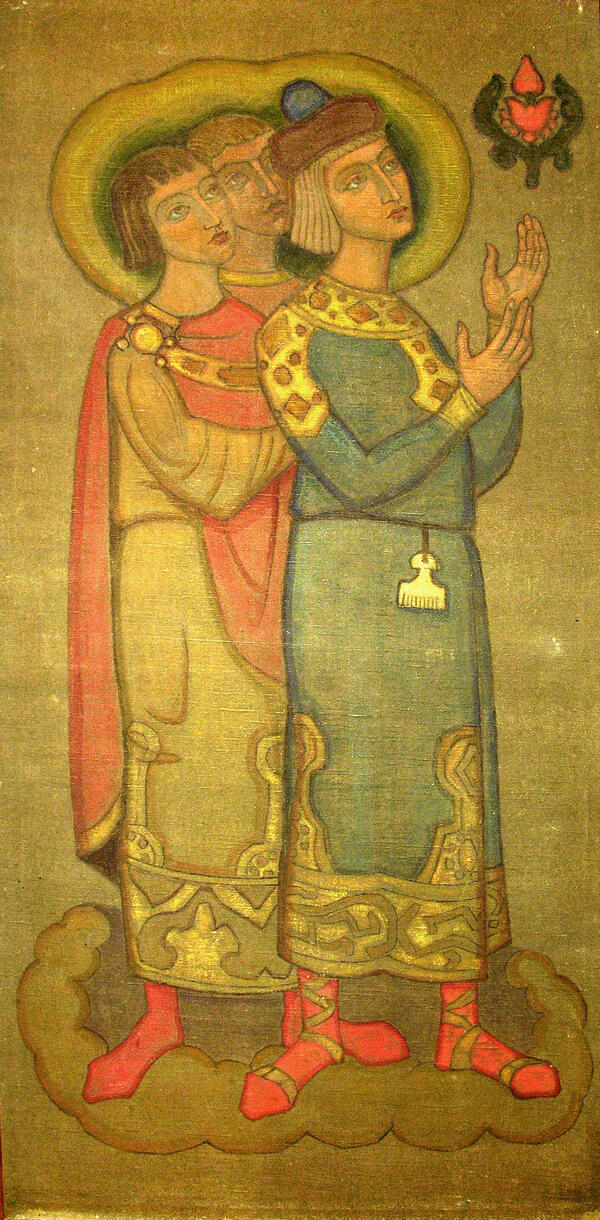Nicholas Roerich was an artist, a scientist, a traveler, a public figure, a writer and philosopher, who took a serious interest in archeology and history from a very young age.
Roerich created his graduation work ‘The Messenger’ based on the ‘Tale of Bygone Years’ at the Imperial Academy of Arts, for which received the title of artist. Pavel Tretyakov bought it from the thesis exhibition for his collection. In the early 1900s, the artist traveled across Russia, made sketches of ancient monuments for his future works, and studied folklore.
Roerich created sets and costumes for theatrical performances, including several productions of Sergei Diaghilev’s ‘Russian Seasons’.
In 1909, composer Igor Stravinsky and Nicholas Roerich began to work on a ballet, the plot of which revolved around ancient beliefs and rituals of pagan Russia. Their work on sets and costumes for the ‘Rite of Spring’ (the working title was ‘The Great Sacrifice’) was not finished until 1913. In the final version, the ballet was divided into two parts: ‘The Adoration of the Earth’ and ‘The Great Sacrifice’.
The first part included spring divinations, dances of young girls, rituals of abduction, khorovods (round dances), the ritual of the Rival Tribes, the procession of the Sage (wise man) and his ritual kiss of the blooming earth and ‘the Dance of the Earth’. The second part included the mysterious games of the girls, walking in circles ‘among enchanted stones’, choosing a victim and honoring her (Glorification of the Chosen One), evoking of the ancestors, the Ritual Action of the Ancestors (the forefathers of men) and the Sacrificial Dance. The costumes of the characters echoed the ballet’s scenery.
Three sketches of costumes for the ‘Rite of Spring’ — the outfits of a girl, a dandizette and a priest — are displayed in the collection. While working on them, Roerich carefully studied the Russian folk costume. However, he combined the ethnographic authenticity with his artistic vision. The costumes were made mainly in white and red colors, so that the dancers would stand out against the green background. The geometric ornament on the clothes imitates embroidery, the artist depicted bast shoes on the legs of the girl, the dandizette and the priest.
During the lifetime of its creators, the ‘Rite of Spring’ was staged several times: in the 1920s, 1930s and 1940s in theaters in Paris, London, Philadelphia, Milan and Stockholm. And each time Roerich took part in the design of these productions. The last time happened in 1944, when he was in India. This performance took place on April 24, 1948, after the artist’s death. The costumes for the premiere of 1913 have been preserved to this day, almost intact, and are housed in various museums.
Roerich created his graduation work ‘The Messenger’ based on the ‘Tale of Bygone Years’ at the Imperial Academy of Arts, for which received the title of artist. Pavel Tretyakov bought it from the thesis exhibition for his collection. In the early 1900s, the artist traveled across Russia, made sketches of ancient monuments for his future works, and studied folklore.
Roerich created sets and costumes for theatrical performances, including several productions of Sergei Diaghilev’s ‘Russian Seasons’.
In 1909, composer Igor Stravinsky and Nicholas Roerich began to work on a ballet, the plot of which revolved around ancient beliefs and rituals of pagan Russia. Their work on sets and costumes for the ‘Rite of Spring’ (the working title was ‘The Great Sacrifice’) was not finished until 1913. In the final version, the ballet was divided into two parts: ‘The Adoration of the Earth’ and ‘The Great Sacrifice’.
The first part included spring divinations, dances of young girls, rituals of abduction, khorovods (round dances), the ritual of the Rival Tribes, the procession of the Sage (wise man) and his ritual kiss of the blooming earth and ‘the Dance of the Earth’. The second part included the mysterious games of the girls, walking in circles ‘among enchanted stones’, choosing a victim and honoring her (Glorification of the Chosen One), evoking of the ancestors, the Ritual Action of the Ancestors (the forefathers of men) and the Sacrificial Dance. The costumes of the characters echoed the ballet’s scenery.
Three sketches of costumes for the ‘Rite of Spring’ — the outfits of a girl, a dandizette and a priest — are displayed in the collection. While working on them, Roerich carefully studied the Russian folk costume. However, he combined the ethnographic authenticity with his artistic vision. The costumes were made mainly in white and red colors, so that the dancers would stand out against the green background. The geometric ornament on the clothes imitates embroidery, the artist depicted bast shoes on the legs of the girl, the dandizette and the priest.
During the lifetime of its creators, the ‘Rite of Spring’ was staged several times: in the 1920s, 1930s and 1940s in theaters in Paris, London, Philadelphia, Milan and Stockholm. And each time Roerich took part in the design of these productions. The last time happened in 1944, when he was in India. This performance took place on April 24, 1948, after the artist’s death. The costumes for the premiere of 1913 have been preserved to this day, almost intact, and are housed in various museums.
